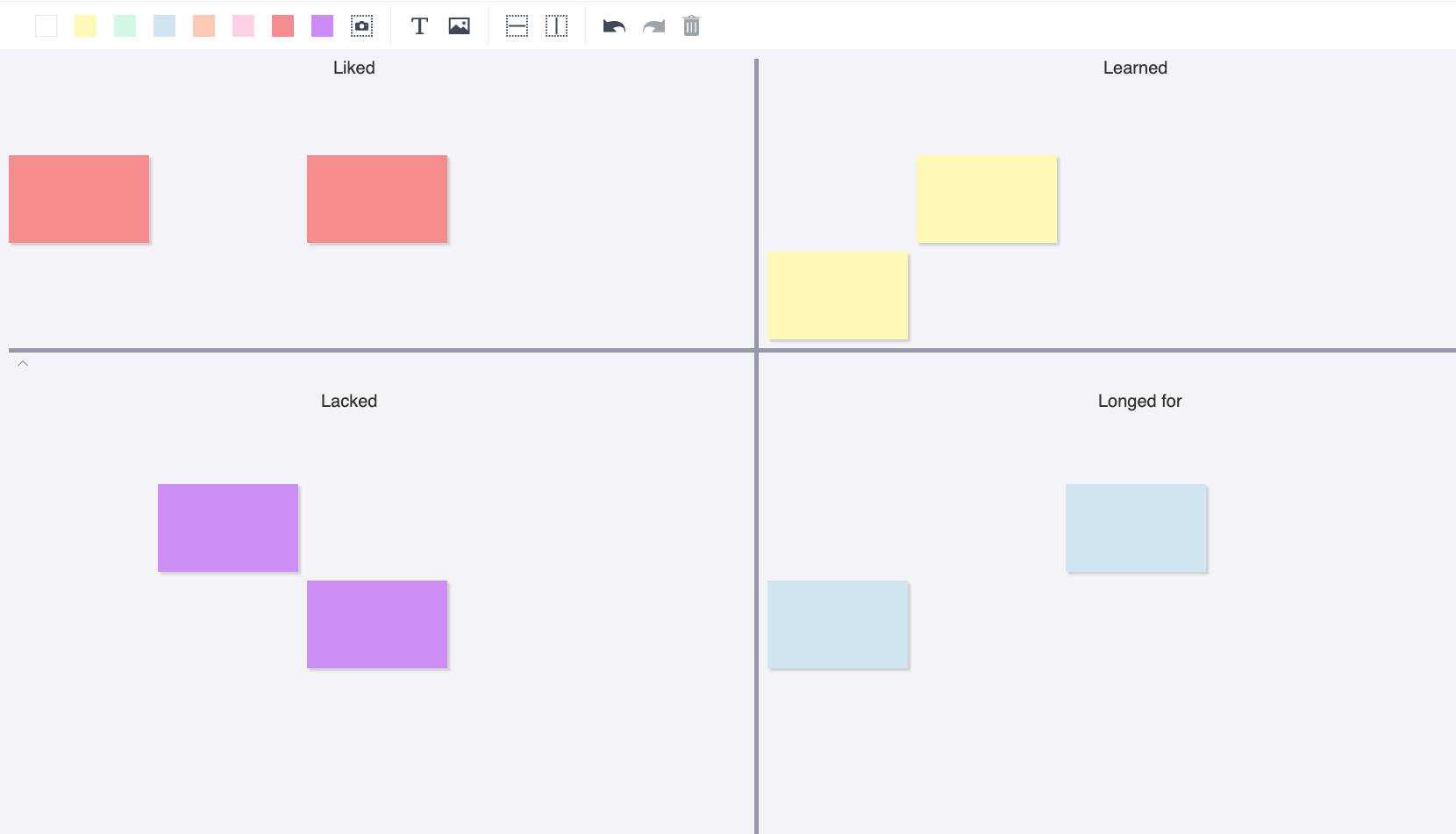How to hold 4 Ls Retrospective

What is a 4 Ls Retrospective?
At the conclusion of a sprint, the 4 Ls Retrospective is designed to bring clarity to what your team liked, learned, lacked, and longed for. This exercise exists to understand what did and did not work well and what can be improved moving forward.
An important element to round up a sprint is to allow your team’s voice to be heard. The 4 Ls retrospective empowers a team to highlight the positives of the sprint and understand the negatives. It is important to base the conversation on facts and remove the emotional component that may have arose in the midst of working on the sprint.
The best part is, the 4 Ls only requires about 30 minutes to complete. It is easy and simple to set up and for teammates to understand.
How to run a 4 Ls retrospective?
STEP 1: Communicate the expectation
Before you begin the retro it is important to communicate what the purpose of the activity is. Be honest with your teammates on how the sprint may have went. If emotions were high, do not be afraid to communicate that Be open and clear. It is the facilitators duty to create the expectation for the activity and it should be taken seriously.
When teammate are bought into the retro, you will see the greatest level of success. It is on the facilitator to take good care of this conversation before the activity begins.
STEP 2: Set up the environment
Although this can be done in person, due to the rising amounts of at-home work and distributed teams, finding the collaborative tool that supports your team’s needs is a necessity. CardBoard supports the 4 Ls Retrospective.
In CardBoard, a retrospective works best when each member of your team has an account and can provide their own feedback onto the board. This is as easy as inviting your desired team members into your community and then on to the desired board.
STEP 3: Identity what was liked
First, figure out what your team liked about the sprint. Leave the conversation open and allow your team the space to contribute. As a facilitator take responsibility into guiding your team to useful insights of what they liked, but more specifically why they liked it.
The goal in this step is to figure out the why behind why an item was liked. It is important to take these into serious consideration to figure out how it can happen again in the next sprint.
STEP 4: Identity what was learned
Throughout any sprint it is almost guaranteed there will be mistakes and challenges. Most likely, through those experiences there will be lessons that are learned and those are important to note and share with the team. Ask team members to share any items they may have learned.
No lesson is too big or too small to share. Guide your team through discovering their learnings they had during the sprint.
STEP 5: Identity what was lacked
In this step your team will uncover what items held the team back in the sprint. Perhaps the remote working conditions made communication slow and difficult and your team needs to adopt technology to provide faster communication. In this step you want to identify what was missing so that you won’t run into the same problem in the future.
Again, like the previous steps, as a facilitator of the session you want to encourage your team to be open. Many times members may feel uncomfortable sharing in this step, however, to ensure the problems can be solved for the next sprint, this step is very important to take serious and hear your team out.
STEP 6: Identity what was longed for
In this step your team wants to look into what was longed for. Whether it is better online tools, faster internet, more equipment for at-home offices.
Be sure to separate this from the ‘lacked’ section. Although it is similar, this section you can prioritize what is needed based on the positive results it can bring for the next steps. You might consider ‘faster internet’ or ‘better software’ as a longing for having struggled with ‘slower computers.’
STEP 7: Create action items and follow up
This can be considered the most important step in the retrospective process.
Before the conclusion of the retro, ask your team members to own the next steps in the process. Ask members to take the lead and assign tasks to those responsible for uncovering the insight during the retrospective. End the session by creating shared understanding of what the expectations are moving forward.
Tips for success
Give your team space and time to reflect on the sprint, uninterrupted.
Make sure your team knows there is no wrong answers.
Shut off devices to increase focus during the retro.
Focus on actions, not emotion.
Use this process to bring your teams together – especially remote teams where day-to-day isolation may feel heavier.
When should you use the 4 Ls Retrospective?
Use the 4 Ls Retrospective when you want to gather data on the positives and negatives at the end of a sprint. Use your findings to improve the experience for you and your team for your next sprint.
Didn’t find what you need? Visit our Help Center to find answers or get in contact with our team.
Ready to try CardBoard for yourself? Sign up to start your 14 day free trial!
